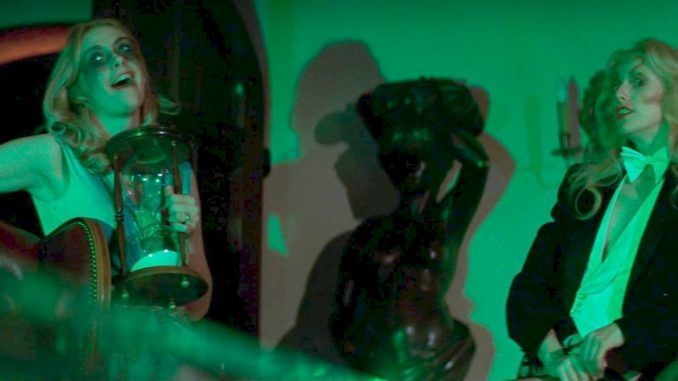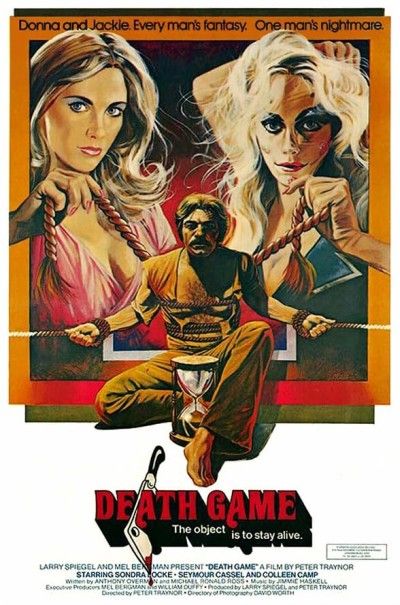
Rating: C+
Dir: Peter S. Traynor
Star: Seymour Cassel, Sondra Locke, Colleen Camp, Beth Brickell
The home invasion film has been around for a long time – some suggest as far back as 1909 silent The Lonely Villa, starring Mary Pickford. However, it seems undeniable the sub-genre took on new momentum following the Manson Family Murders in 1969. After those, it was clear, if even Hollywood stars weren’t safe, nobody was. Those killings were still relatively fresh in society’s collective memory, having happened barely a handful of years before the movie was filmed in October 1974. [Fun fact: Sissy Spacek and Bill Paxton worked as set dressers] No wonder the film opens with a caption, “This motion picture is based on a true story. It should serve to remind us that fate allows no man to insulate himself against the evil which pervades our society.”
True? Well… Co-writer Michael Ronald Ross supposedly did pick up a hitch-hiking hippie and took her home, finding her rather harder to get rid of. But this is mild compared to the fate befalling architect George Manning (Cassel), after he opens the door to Jackson (Locke) and Donna (Camp), a pair of very moist teenagers, supposedly lost in a storm. Though I should probably say “teenagers”, considering Locke was actually in her thirties at the time of shooting, and Camp aged 21. Cassel, meanwhile, looks like a discount Oliver Reed, and was so unhappy on set, he refused to do any post-production dubbing, forcing editor David Worth to re-voice all his lines. [Mind you, Clint Eastwood was involved at one point, which would have been interesting]
 I think the first half works better than the second, especially if you’ve seen any of the other versions, and consequently know where we are going. It lends a certain inevitable, almost Shakespearean tragedy to the situation, despite the remarkable speed with George goes from happily married to “threesome with jailbait”. He also manages to get rid of them, at least temporarily, driving the pair to the bus station, only for them to return – and this is when things become almost relentlessly bleak. Some subsequent critics have tried to paint the movie as feminist; I’m inclined to disagree, given the barking mad performances delivered by Locke and Camp, appearing to take “hysterical” as a starting point for largely improvised portrayals.
I think the first half works better than the second, especially if you’ve seen any of the other versions, and consequently know where we are going. It lends a certain inevitable, almost Shakespearean tragedy to the situation, despite the remarkable speed with George goes from happily married to “threesome with jailbait”. He also manages to get rid of them, at least temporarily, driving the pair to the bus station, only for them to return – and this is when things become almost relentlessly bleak. Some subsequent critics have tried to paint the movie as feminist; I’m inclined to disagree, given the barking mad performances delivered by Locke and Camp, appearing to take “hysterical” as a starting point for largely improvised portrayals.
The results are all fairly sloppy, particularly in an ending which can only have been resulted from some kind of wager, as to the stupidest way a film can finish. Yet therein lies its charm, at least to some extent, because it’s when the home invaders are at their most insane and unpredictable, that the movie is at its strongest. Nobody here is exactly sympathetic, with George’s barely token resistance indeed making him kinda creepy. It could perhaps make sense if Locke wasn’t obviously approaching twice the age of her character, and engaging in unconvincing cosplay as a teenager. Not released for almost three years after shooting finished, it’s possible it might never have seen the light of day, had Locke not become famous for The Outlaw Josey Wales.
